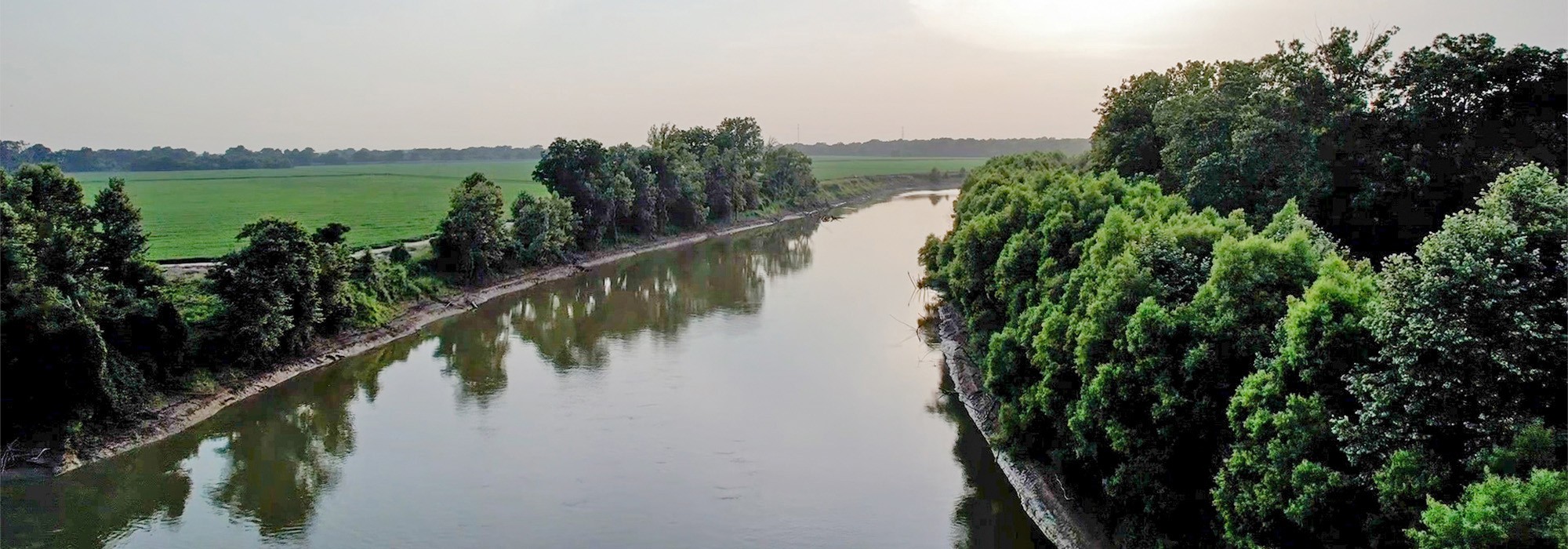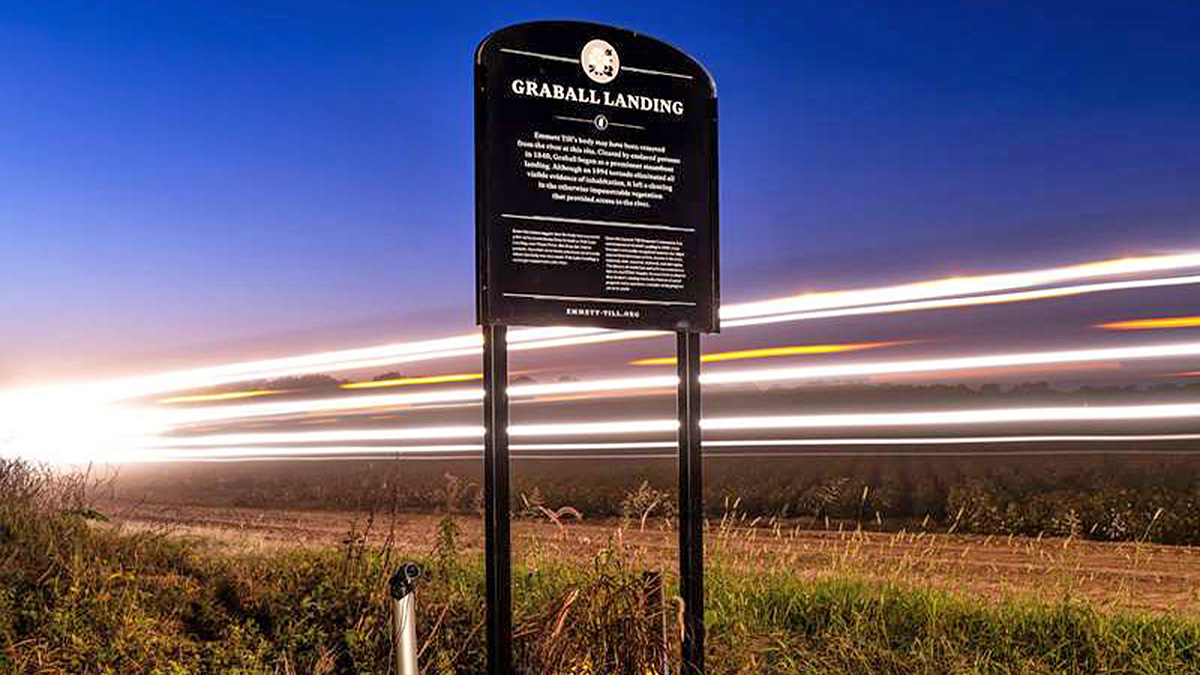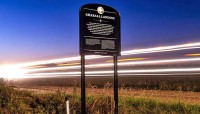Situated along River Road on the north bank of the Tallahatchie River near the confluence of Black Bayou, this roughly four-acre, relatively flat parcel commemorates the approximate location where fourteen-year-old Emmett Till’s body was recovered in 1955 after he was lynched, tortured, shot and thrown into the river by two white men. The rural site incorporates land that was cleared in 1840 by enslaved peoples of the Cullen McMullen Place Plantation and used as a steamboat landing until 1894. By the 1950s the site was distinguished as a break in the otherwise expansive, riparian forest. The riverbank has since eroded and has been colonized with second growth vegetation, including willows and sycamore, making the precise location where Till’s body was recovered difficult to determine.
In 2008 the Emmett Till Memorial Commission (now Emmett Till Interpretive Center) installed an interpretive sign along the unpaved River Road. Within six months it was removed by vandals and discarded in the river. The second and third replacements were each vandalized, scarred by more than 100 bullet holes. The current interpretive marker was dedicated in 2019 and is noted for its bullet-proof design and construction. It stands over six feet tall and is adjacent to the hewed metal posts of a previous sign. A narrow, unpaved path leads through a clearing, approximately 300 feet south to the riverbank. The site is a contributing feature of the Emmett Till and Mammie Till-Mobley National Monument, in Illinois and Mississippi and established by President Biden in 2023.









